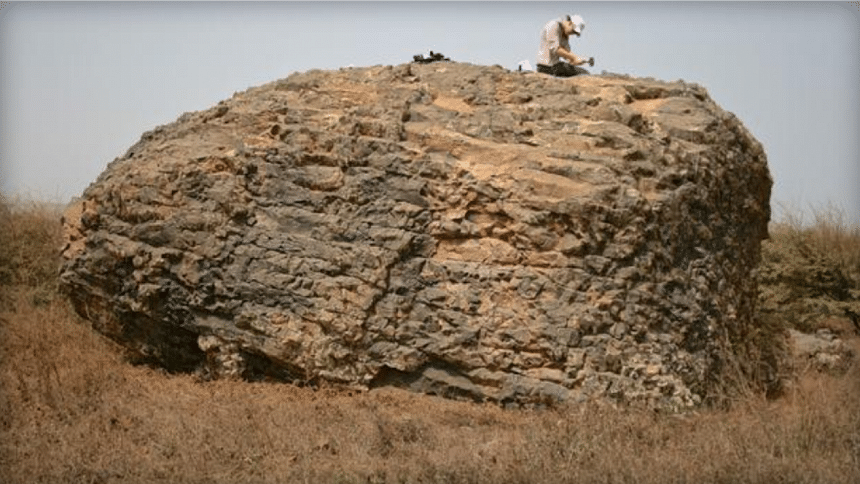Is ancient 800-ft megatsunami wave a sign of things to come?

Scientists have found evidence off the west coast of Africa that tens of thousands of years ago a collapsing volcano sparked a megatsunami producing waves up to 800 feet high.
The tsunami, which engulfed an island 30 miles away, raises questions over whether such a collapse poses a threat to people living on volcanic islands today, reports CBS News.
Waves from biggest tsunami in modern times by comparison - the 2004 Indian Ocean tsunami - were 100 feet tall.
One of the world's largest and most active island volcanoes occurred some 73,000 years ago at the Fogo volcano. It towers 2,829 meters (9,300 feet) above sea level, and erupts about every 20 years.
"(Collapses) probably don't happen very often," said Ricardo Ramalho, who did the research as a postdoctoral associate at Columbia University's Lamont-Doherty Earth Observatory and is the lead author of a new study in Science Advances. "But we need to take this into account when we think about the hazard potential of these kinds of volcanic features."
Ramalho and his colleagues found the evidence of the ancient megatsunami on Santiago Island, about 55 kilometers (34 miles) from Fogo. Now the island is home to some 250,000 people.
The researchers spotted unusual boulders - some as big as delivery vans - lying as far as 2,000 feet inland and nearly 650 feet above sea level. The only realistic explanation the scientists could come up with for how they got there: A gigantic wave must have ripped them from the shoreline and lofted them up.
To date the event, Ramalho and Lamont-Doherty geochemist Gisela Winckler measured isotopes of the element helium embedded near the boulders' surfaces.
Such isotopes change depending on how long a rock has been lying in the open, exposed to cosmic rays. The analyses centered around 73,000 years - well within an earlier estimate of a smaller event.
The analysis "provides the link between the collapse and impact, which you can make only if you have both dates," said Winckler.
Tsunami expert Bill McGuire, a professor emeritus at University College London who was not involved in the research, said the study "provides robust evidence of megatsunami formation [and] confirms that when volcanoes collapse, they can do so extremely rapidly."
"Our point is that flank collapses can happen extremely fast and catastrophically, and therefore are capable of triggering giant tsunamis," said Ramalho.
The new study is the latest evidence to support concerns about the threats posed by volcanic flanks though some scientists question whether a volcano of this size really would collapse,. Several have collapsed over the past several hundred years, including eight smaller ones in Alaska and Japan.
Other studies have proposed much larger prehistoric collapses and resulting megatsunamis, in the Hawaiian islands, at Italy's Mt. Etna, and the Indian Ocean's Reunion Island. But critics have said these examples are too few and the evidence too thin.
Based on his own work, McGuire said that such megatsunamis probably come only once every 10,000 years.
"Nonetheless," he said in a statement, "the scale of such events, as the Fogo study testifies, and their potentially devastating impact, makes them a clear and serious hazard in ocean basins that host active volcanoes."
Ramalho cautions that the study should not be taken as a red flag that another big collapse is imminent here or elsewhere. "It doesn't mean every collapse happens catastrophically," he said. "But it's maybe not as rare as we thought."
Still, he said the Fogo eruption last year produced lava flows that displaced some 1,200 people, and destroyed buildings including a new volcano visitors' center. "Right now, people in Cape Verde have a lot more to worry about, like rebuilding their livelihoods after the last eruption," said Ramalho. "But Fogo may collapse again one day, so we need to be vigilant."

 For all latest news, follow The Daily Star's Google News channel.
For all latest news, follow The Daily Star's Google News channel. 



Comments